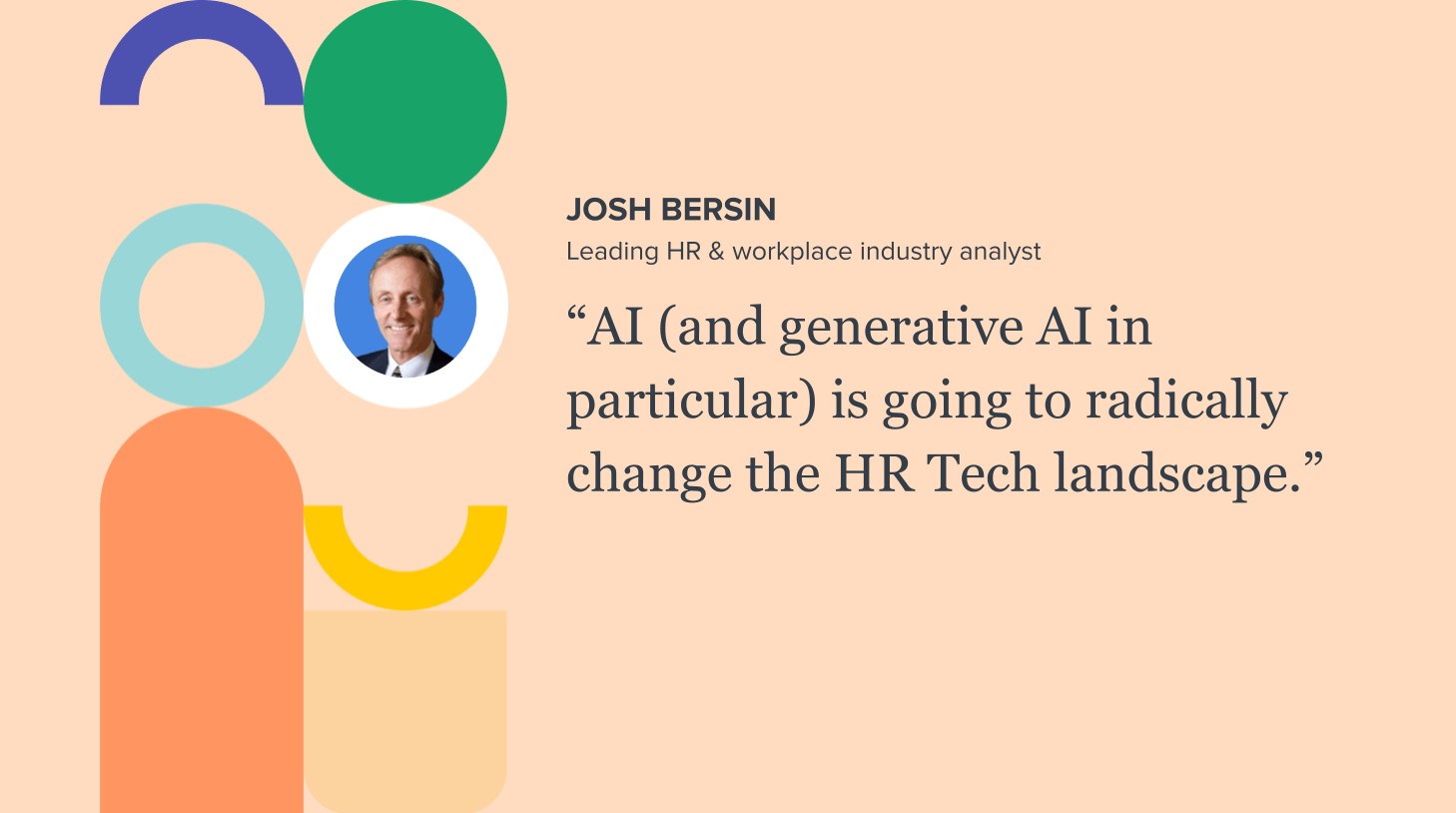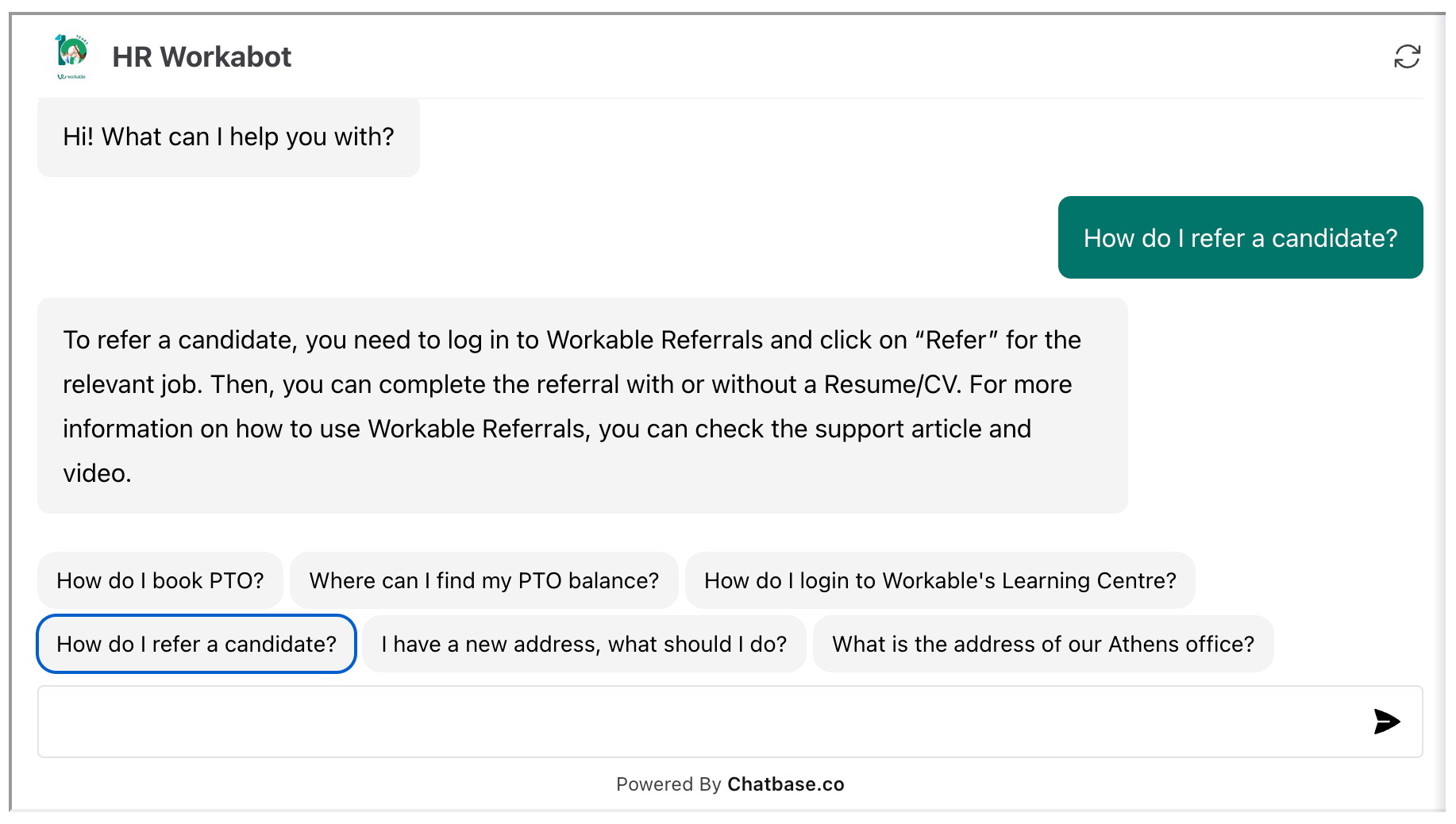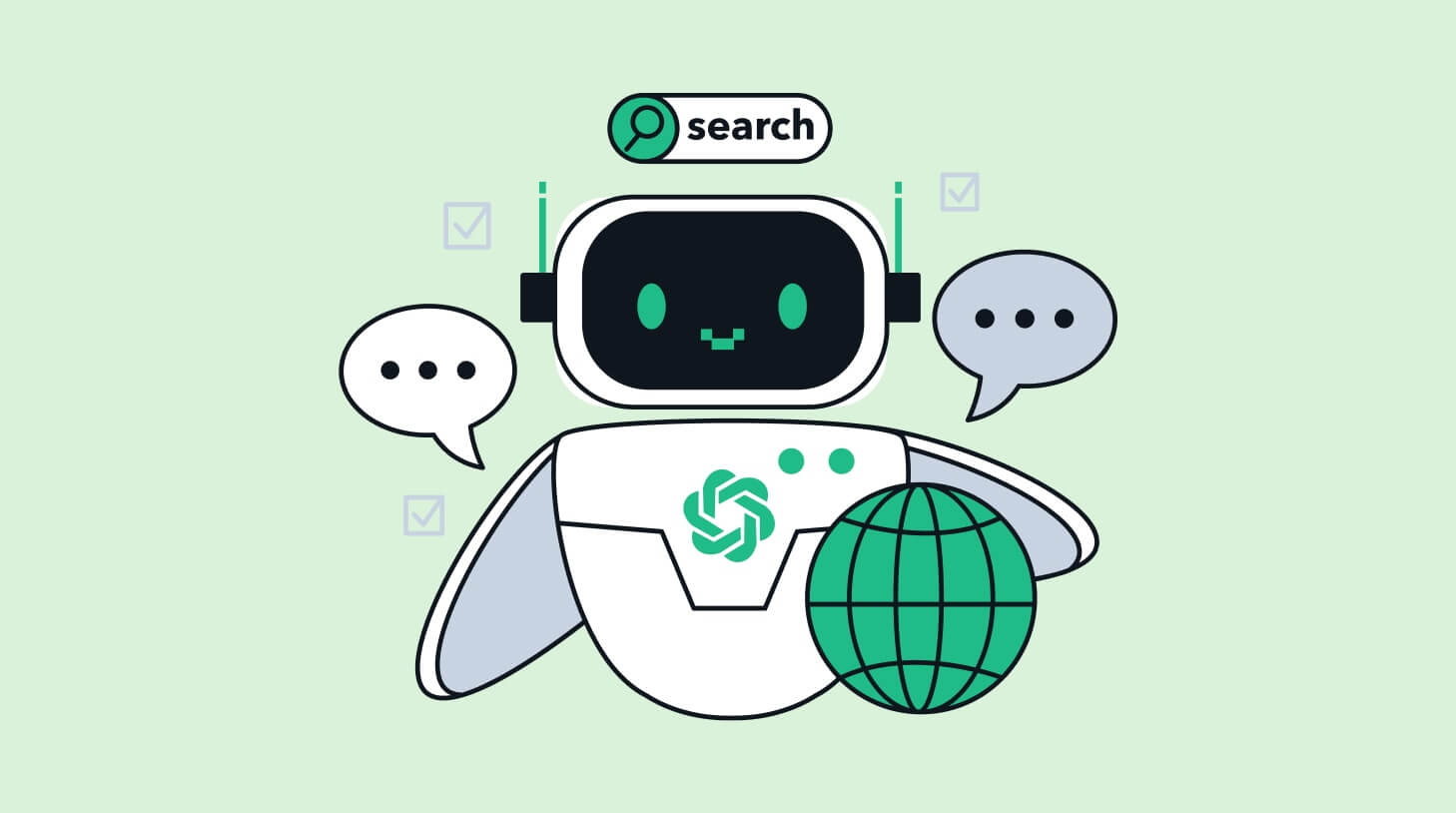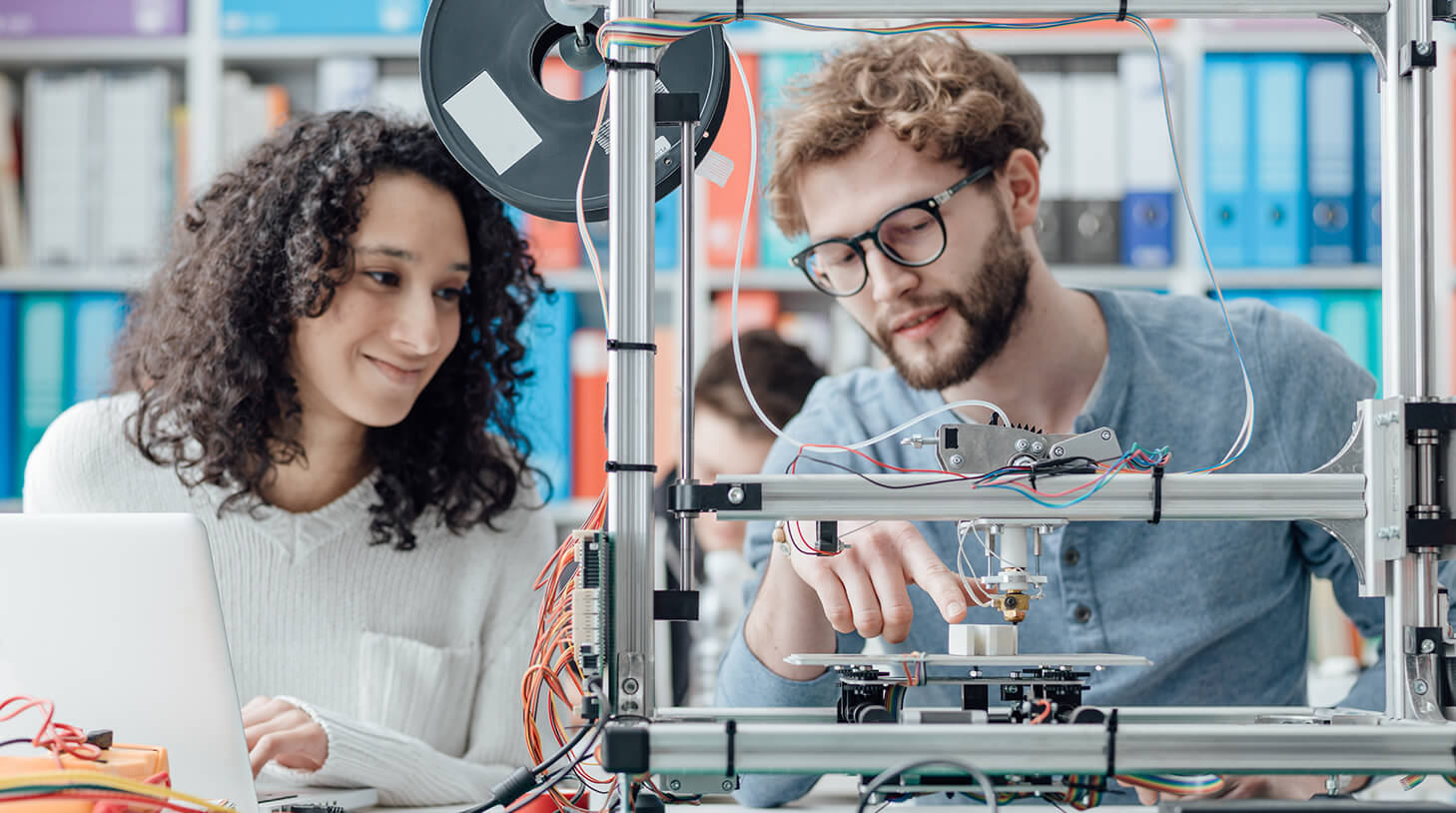How is AI used in human resources? 7 ways it helps HR
Discover how integrating artificial intelligence in human resources can enhance recruiting, performance reviews, employee engagement, talent development, and more. Learn about the benefits that come with incorporating AI-driven tools for both HR professionals and employees.

Artificial intelligence is a broad term that encompasses several types of technology – that much is an understatement. And this applies to human resource management as well. AI is increasingly being used in human resources to help drive decisions about hiring, retention and employee development.
AI can also be used to automate tasks like payroll and benefits administration – but it’s being used for so much more, including the rapid creation of new policies, contracts, job descriptions, interview questions, and so on. You can also anticipate and plan for outcomes using predictive analytics and machine learning.
But wait. We’re getting ahead of ourselves – just in case you aren’t super well-versed in the terminology, let’s get into what AI is all about.
Contents
What is AI and what’s the big deal about it?
Artificial Intelligence (AI) refers to the development of computer systems that can perform tasks typically requiring human intelligence. This includes capabilities such as learning, reasoning, problem-solving, and understanding natural language.
It’s a big deal, especially now, because it’s transforming the way we work in specializations including autonomous vehicles, medical diagnostics, financial management, risk prediction and preemption, and much more.
The way you work will evolve measurably with artificial intelligence being used in human resources. HR expert Josh Bersin wrote recently that “AI (and generative AI in particular) is going to radically change the HR Tech landscape”.
He’s not wrong.
For example: An HR manager might use an AI-enabled tool like Workable as part of their talent acquisition strategy by automating the recruitment process. For example, automated screening frees up time and resources spent on interviewing candidates who aren’t qualified for open positions at their company.
That freed-up time can be invested in other crucial HR work such as managing employee relationships or hiring new team members into existing roles where there are vacancies.
7 ways AI is used in human resources
Let’s get into the deeper ways that artificial intelligence is making its mark on your work in human resources:
1. Recruiting
AI is helping companies find the right talent by analyzing resumes and matching them with job descriptions. Workable is a good example of this – it not only parses resumes for you, it’ll also use the resulting data to pull together a list of ideal candidates scraped from LinkedIn and other online resources, and even write an email for you to those candidates to lure them to your open positions.
The evaluation process is also increasingly AI-driven, from video interview insights to personality assessments and a lot more. In doing so, you’re not only saving countless hours of work but you’re also ensuring that no potential candidate is overlooked due to human error or fatigue. You can even go to ChatGPT itself to help you out, as Nikitas Marinos describes in his tutorial on how to use the tool to build an ideal candidate profile.
2. Performance reviews
Consider the case of Alexandra, a department head who needs to conduct performance reviews for her team. She uses an AI-powered system that tracks and analyzes employee performance data throughout the year. This system considers factors like completed tasks, project involvement and peer feedback.
When review time comes, Alexandra receives a comprehensive report highlighting each team member’s strengths, areas for improvement, and progress over time. This takes the guesswork out of the review process for her, making it more objective and fair for her team.
3. Employee onboarding/offboarding processes
New hires often feel overwhelmed with paperwork and procedures. Now imagine an AI-driven onboarding platform. When a new employee, let’s say, Maria, joins the company, she is guided by this platform. The platform then walks Maria through the necessary forms, introduces her to company policies, and even sets up her initial training sessions.
As a result, Maria feels less stressed and more welcomed. Similarly, when an employee leaves the company, the AI can manage exit surveys, return of company property and other offboarding tasks, ensuring a smooth transition for both parties. It’s a win-win.
Related: Recruitment marketing strategy: why it pays to be authentic
4. Employee engagement initiatives
HR teams often struggle to gauge employee sentiment accurately. An AI-powered survey tool can automate this process. For example, you can automate a short, engaging survey that solicits honest and anonymous feedback from employees – the results of which are analyzed by an AI tool.
Trends and areas of concern are then identified as a result, providing HR teams with the insights they need to improve employee satisfaction and engagement. Want to go deeper in this area? Read on!
5. Talent development and training
AI can also personalize learning and development for employees. Consider the experience of Marcel, who’s very interested in growing in his role in software development – not wholly unusual given that 62% of tech workers find learning and development to be a primary motivator in their work.
Now, imagine an AI platform that analyzes Marcel’s skills and career ambitions. Based on his role and goals, the AI recommends specific training courses, webinars, or workshops. Rachel appreciates this personalized approach, which motivates her to actively engage in her career development.
6. Workforce planning
Executives like Alexandra – the aforementioned department head looking at performance reviews – will also be looking for gaps and opportunities in her team so she can build out her hiring plan for the next year.
By analyzing data such as current workforce skills, industry trends, and company growth plans, an AI tool can predict which roles she might need to fill in the next year. This allows Alexandra to strategize and plan ahead, ensuring the company always has the right talent. The same logic applies across the company – so even a global C-suiter can utilize these tools to boost their perspective.
7. HR chatbots and virtual assistants
Finally, consider an AI chatbot that serves as a 24/7 HR assistant. Employees can ask the chatbot questions about leave policies, benefits and more. This allows the HR team to focus on strategic tasks, while employees get instant answers to their questions, boosting their overall experience.
Related: Candidate-facing chatbots: a more human digital touch
For example, Workable’s HR team built a chatbot of its own using Chatbase.co:
Artificial intel is the great assistant
These are just a few ways that AI can boost everyday HR tasks, making them more efficient and effective. Each AI-driven solution not only eases the workload of HR professionals but also enhances the overall employee experience – and moreover, gives your role even more value in the overall business.
Want to learn more? Take a deep dive into our all-encompassing article on AI, ChatGPT and the human touch in hiring.
Frequently asked questions
- How is AI used in recruitment processes?
- AI analyzes resumes, matches them to job descriptions, identifies ideal candidates from online resources, streamlines evaluation processes through automated video interviews and personality assessments.
- How is AI used in performance reviews?
- By tracking and analyzing employee data throughout the year, it provides comprehensive reports highlighting individual strengths, areas for improvement and progress over time – ensuring fairer evaluations.
- Why is AI onboarding good for new hires?
- It guides newcomers through necessary forms and policies while helping schedule initial training sessions – reducing stress levels during this crucial period of acclimating within a company culture.
- Why should companies adopt AI survey tools?
- Automated feedback surveys ensure unbiased reporting by employees that provide actionable insights to improve overall satisfaction.
- Can workforce planning be improved using AI technology?
- Using collected data on current workforce skills trends along with industry analysis can optimize future hiring procedures tailored specifically around identified gaps or needs specific to each business case scenario at hand.







